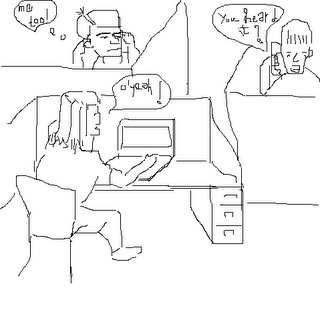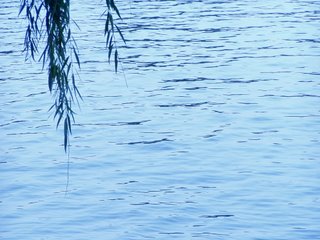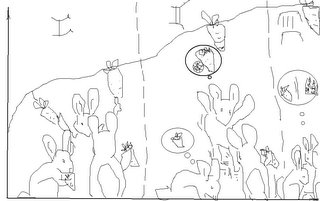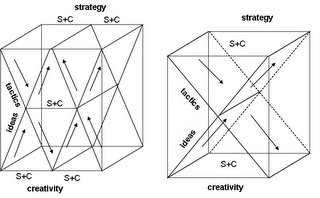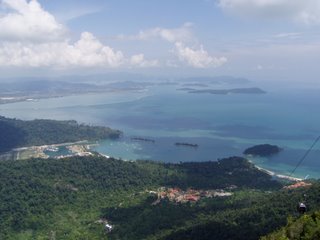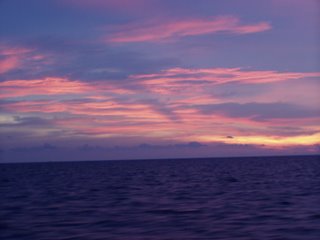Carbon Credit Gimmick, Destruction of Nature Cover up, Sham, Dew Drops, Ravichander Rao
Carbon credits have come into existance due to the Kyoto Protocol that requires signatory countries to bring their CO2 levels 5.2% below their 1990 levels and achieve a certain target by 2012 (source: economictimes.indiatimes.com). Each carbon credit is obtained by reduction of 1 ton of CO2, and countries having the surplus credits can choose to trade these credits for a premium. Interestingly India has surplus of these credits (since it is less industrialized in India, there is lower GHG level and most likely not because of better processes), which gives her an opportunity to make huge wealth . The reason is simple - cost benefit. Cost of bringing down the CO2 levels in developed countries could be $350 per ton whereas it would be $10 per ton in a developing nation.
Something that bothers me is, how is it possible to achieve lower levels of GHG (green house gases) by trading the carbon credits, if the beneficiaries currently are industries? An industry always tries to maximize its wealth, which means larger industrialization. With rate of research success for lowering the GHG lower than that of rate of industrilization, it won't be possible to cutdown on GHG. To worsen the case, developed countries are going to buy carbon credits from developing nations to offset for the difference, instead of cutting their existing levels. So what it means is - overall there is no real any effort to curb the GHG level and to make the environment greener.
Take the example of PUC (pollution under control) certifcate implementation in India (this is quite analogous). Though we have tried to implement Euro I norm for vehicular pollution control, we haven't seen any reduction in pollution levels. Every other city in India is highly polluted. Let us consider a case to understand why is it so.
"If every vehicle produces 10 gm/km (approx. Euro I norm) of GHG and there is a raise of 1 million vehicle on the road every year, assuming every vehicle drives at least 1000 km in a year, there is surplus of 10 million kg or 10,000 tons (which is approx. equivalent to hauling capacity of 160 goods wagons) of GHG in a year! Since there is no program in place for recycling GHG produced, we start with a surplus of 10,000 tons of GHG in the next year. With each year that goes by GHG levels get compounded, so each year is worse than the previous one ..."
So some things that need to be investigated at this point to verify the effectiveness of carbon credit system are, does the Kyoto Protocol address any of the following:
- provides guidelines on how should one use the revenue generated by selling the surplus credits?
- defines what role should government play in this whole gamut?
- verifies have we become more greener than we were before?
Goes without saying: your suggestions and comments are welcome.
Carbon credits have come into existance due to the Kyoto Protocol that requires signatory countries to bring their CO2 levels 5.2% below their 1990 levels and achieve a certain target by 2012 (source: economictimes.indiatimes.com). Each carbon credit is obtained by reduction of 1 ton of CO2, and countries having the surplus credits can choose to trade these credits for a premium. Interestingly India has surplus of these credits (since it is less industrialized in India, there is lower GHG level and most likely not because of better processes), which gives her an opportunity to make huge wealth . The reason is simple - cost benefit. Cost of bringing down the CO2 levels in developed countries could be $350 per ton whereas it would be $10 per ton in a developing nation.
Something that bothers me is, how is it possible to achieve lower levels of GHG (green house gases) by trading the carbon credits, if the beneficiaries currently are industries? An industry always tries to maximize its wealth, which means larger industrialization. With rate of research success for lowering the GHG lower than that of rate of industrilization, it won't be possible to cutdown on GHG. To worsen the case, developed countries are going to buy carbon credits from developing nations to offset for the difference, instead of cutting their existing levels. So what it means is - overall there is no real any effort to curb the GHG level and to make the environment greener.
Take the example of PUC (pollution under control) certifcate implementation in India (this is quite analogous). Though we have tried to implement Euro I norm for vehicular pollution control, we haven't seen any reduction in pollution levels. Every other city in India is highly polluted. Let us consider a case to understand why is it so.
"If every vehicle produces 10 gm/km (approx. Euro I norm) of GHG and there is a raise of 1 million vehicle on the road every year, assuming every vehicle drives at least 1000 km in a year, there is surplus of 10 million kg or 10,000 tons (which is approx. equivalent to hauling capacity of 160 goods wagons) of GHG in a year! Since there is no program in place for recycling GHG produced, we start with a surplus of 10,000 tons of GHG in the next year. With each year that goes by GHG levels get compounded, so each year is worse than the previous one ..."
So some things that need to be investigated at this point to verify the effectiveness of carbon credit system are, does the Kyoto Protocol address any of the following:
- provides guidelines on how should one use the revenue generated by selling the surplus credits?
- defines what role should government play in this whole gamut?
- verifies have we become more greener than we were before?
Goes without saying: your suggestions and comments are welcome.
